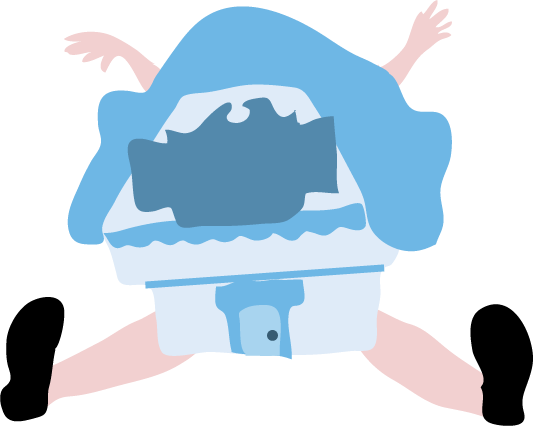Alfred Hitchcock, An Auteur
Alfred Hitchcock is an
American Auteur director. An auteur is
someone that makes films that can easily be identified as one director’s work. This
is usually done is plot, themes, style and script. He has made a television
series, Alfred Hitchcock Presents, and at least two dozen movies
throughout his career. All of Alfred Hitchcock’s work has a distinct style that
viewers can easily view and recognize as his. Two of his most well known films
are Rear Window released in 1954 and North by Northwest released
in 1959.
Alfred Hitchcock is known all
over the world as the master of mystery and suspense. When the French new wave
were thinking about auteur, they decided that Hitchcock was the epitome of the auteur.
All of his films have a certain style
and feel that are distinctively his. Hitchcock always and only made movies
of this type. Hitchcock himself said, “I am a typed director. If I made
‘Cinderella’, the audience would immediately be looking for a body in the
coach.” (IMDb) At least one character in every movie is going to die; it
does not matter if they are minor or major in plot. People come to a
Hitchcock movie knowing that they will be seeing mystery and suspense before
they even see the movie. The movies deal with psychology, even if they do not
say it directly. Hitchcock is curious to how the human mind works and
feels emotion.
The German Expressionist
Movement in film inspired Hitchcock throughout his career. There are many
similarities between the two. Both carry dark themes, although Hitchcock does
add some dark comedy into the mix. They also have a similar lighting style that
encompasses harsh lighting of obscure shapes. This can especially seen in
Rear Window when they are trying to show James Stewart hiding from the murder.
Both Hitchcock and the German Expressionists enjoy a complex and
intellectual theme.
Hitchcock also advertises the
movies with his name plastered all over the titles, posters, trailers etc. Even
his television show is made up entirely by his name, Alfred Hitchcock
Presents. He knows that marketing himself is a way to keep an
audience interested in viewing what he has created. The thinking is that if you
like one films you will like them all. In themes, all of his movies are very
similar, it is the details of the events and the people that make them
different and interesting. Both Rear Window and North by Northwest
have male-leads that are trying to woo and keep the attention of their female
co-starts.
In both Rear Window
and North by Northwest. Alfred Hitchcock plays with the viewer’s
emotions, usually based on safety and well being of his female leads. Although Hitchcock
is known to have many strong female characters; such as Lisa (Grace Kelly) and
Eve Kendall (Eva Marie Saint). Grace Kelly breaks into the murder’s
apartment to get proof of the crime. His female leads also have blonde hair.
Hitchcock himself has said, “blondes make the best victims. They’re like virgin
snow that shows up the bloody footprints,” (IMDb). To Hitchcock blondes look
innocent and naive but it is also their hair that shows blood the best. He
always shoots his women in a way that allows for the viewer to gaze upon them.
Female characters are always lit softly and almost to where it seems like they
are glowing (Mulvey).
Alfred Hitchcock uses the
same group of actors in most of his films. James Stewart (Rear Window) was in
other Hitchcock films; such as Rope (1948), The Man Who Knew Too Much
(1956), and Vertigo (1958). Stewart’s Rear Window Co-Star Grace Kelly
has also been a few Hitchcock films; Dial M for Murder (1954), and To
Catch a Thief (1955). Carry Grant (North by Northwest) is also in Notorious
(1946), and To Catch a Thief (1955). Because Hitchcock uses the same actors in
all of his films it allows for people to associate that actor, with his movies.
He knows that fans of an actor will follow and see any movie that they are in.
Alfred Hitchcock always makes
cameos when making a movie. Never as a main character, but he is shown as
someone in the background similar to an extra. In the beginning Rear Window
Alfred Hitchcock is winding a clock in the musician’s apartment. In North by
Northwest he is shown just missing his bus in the beginning, coincidentally
right after his name appears on screen in the billing. When watching his movie
he plays a game with his viewer’s. In a way he makes them wonder where he will
appear next and it can be for the shortest amount of time.
Alfred Hitchcock has always been interested in the relationship
between film and music. “He recognized the psychological potential of music to reveal a
character's true feelings when words were not enough, to establish a mood or
ambiance for a scene, to anticipate events, and to increase excitement,”
(Daniel-Richard). Because he understood how important this connection was he
has always worked closely with his composers while creating the score. This
importance of music was sort of lost once the invention and use of sound cinema
was popular. In Rear Window and North By Northwest, the music emphasis the
emotions felt by the viewer. People can feel emotions through music, so this
helps Hitchcock to create the illusion of mystery and suspense in his films.
The music alerts the viewer that something, usually bad, is going to
happen so it puts them on edge until the scene ends or event happens. When
watching a Hitchcock he finds the balance of the viewer wanting to look away
but also not wanting to miss a single second of the movie.
What is very important in
Hitchcock films is everything that you do not see in the shot. This
creates suspense because we do not know what is going on. Usually what the
viewer creates in their mind is worse than what is actually happening. When
letting our minds think it can lead us to some very scary places. In Rear
Window it is what we do not see and know that creates the suspense throughout
the movie. This is extremely true when the lights are turned off in the
murder’s apartment and we do not know what is happening. We never see the wife’s body, it is only
hinted at. We also never see any blood
in the movie, whether it is the wife’s or James Stewart’s when he falls off the
ledge. The images that we create in our
minds are more powerful than an image a director can show us. If something is filmed, it can easily been
seen as cheesy or fake. The images that
we create in our minds are real, sometimes more real than what is possible.
North by Northwest is different
from most other Hitchcock films because it was so grand. This film was
filmed on location at the United Nations and at Mount Rushmore. This grandiose
production is unusual for Hitchcock because he normally does not find it
necessary to be so elaborate. Hitchcock films are normally simple with
minimal shooting on location. Rear Window is shot only in an apartment
with all camera shots being of the apartment or shot in the apartment. Rope,
another Hitchcock film, was only shot in one room and it gives the illusion
that the entire movie is one shot.
Alfred Hitchcock’s The Lady
Vanishes has a majority of its shots filmed on a train, a reference to North by Northwest. This is a reference that Hitchcock makes to
himself.
Alfred Hitchcock is an
American Auteur director. His films
stand the test of time because they are still just as wonderful today as they
were at the time they were released. The
themes characteristic of Hitchcock films are still relevant and important
today. Another reason that Hitchcock
films are not dated is because the emphasis is on plot and story instead of on
the technology. Technology will always
be changing, but what is important to us and our ideas are always constant. Alfred Hitchcock has made many seasons of the
television show, Alfred Hitchcock Presents, and at least two dozen
movies throughout his career. Each movie sharing Hitchcock’s theme and
are always filled with mystery and suspense.
It’s no wonder he is called the master of mystery and suspense. Two of his most well known films are Rear
Window released in 1954 and North by Northwest released in 1959.All
of Alfred Hitchcock’s work has a distinct style that viewers can easily view
and recognize as his. Alfred Hitchcock’s
have stood the test of time and always will.
Works Cited
"Alfred
Hitchcock Quotes." IMDb. IMDb.com, n.d. Web. 18 Mar. 2014.
<http://www.imdb.com/>.
Daniel-Richard,
Debra. "The Dance of Suspense: Sound and Silence in North by
Northwest." Journal of Film & Video 62.3 (2010): 53-60. Academic
Search Complete. Web. 20 Mar. 2014.
Mulvey, Laura "Visual Pleasure and Narrative Cinema." Screen
16.3 (1975): 6-18. Print.


















































